




e can hardly believe it ourselves – but here we are, presenting the 10th issue of our magazine.
Ten issues – a small milestone, yet one that means more to us than just a round number When we first launched the magazine, it was simply an idea, perhaps even an experiment Today, it has become an integral part of our work and a reflection of what drives us: curiosity, a passion for special places, respect for history and cultures – and the joy of sharing all of this with you
Over the course of these ten issues, we’ve explored many paths together –across sand and water, through cities and deserts, through the past and into the present We’ve introduced inspiring people, collected stories, followed projects, and opened up new perspectives
With this 10th issue, we’d also like to say thank you: to our readers, to all those who accompany us on our journey, who support or inspire us And of course, to our team, whose dedication, creativity, and perseverance make each issue possible


As you can see, this time we’ve also included our children in the picture. They are a constant source of motivation and inspiration for us. And they remind us to see the world through different eyes.
Wishing you a wonderful summer and looking forward to hearing from you
Best regards
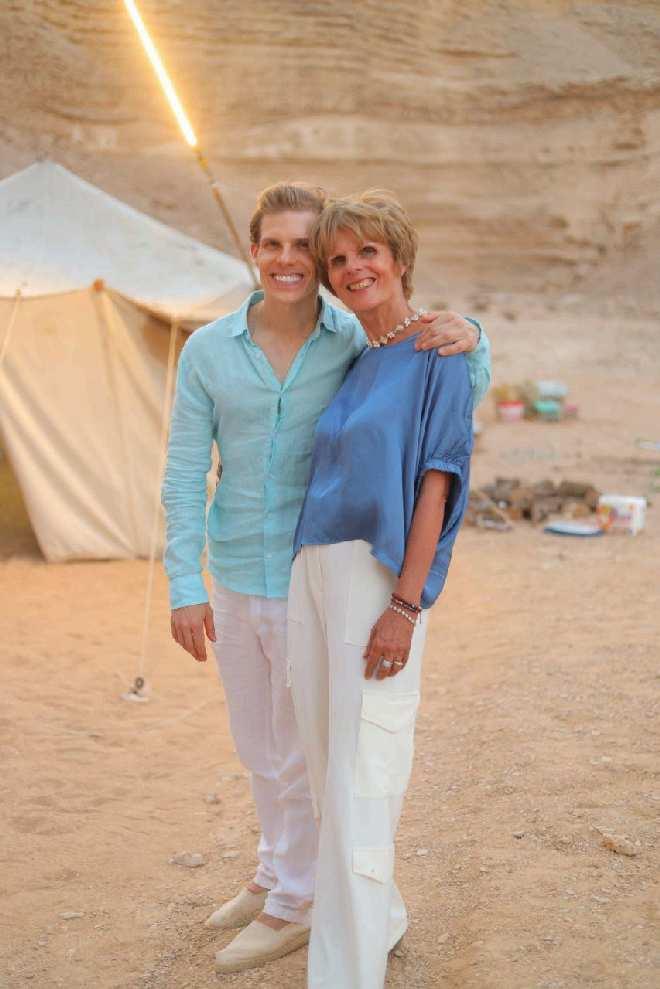
Dorothee and Tarek

Egyptian News - A wake up call
Book recommendation
Stories beside the Mainstream -“Abandoned but Not Forgotten"
Art Scene in Egypt
Outstanding Destinations:“Eastern Desert” of Egypt
Anniversary & Perspectives
9 Issues – 9 Milestones
Places We Always Return To Dabuka after the Revolution
Traveling in Turbulent Times
IV. FOUR OF THE BEST
Lake Nasser Boat Tour – A Timeless Experience
Socotra – Island Between Worlds Along the Oasis Route to Luxor Echoes of History, Silence of the Desert
V. VARIOUS
Dabuka Internal By Chance



Show Us Your Best Dabuka Moments!
Have you recently traveled with Dabuka?
Send us your best travel photo –we’ll feature a selection in our next magazine!
The community will vote for their favorite, and the winning image will receive a $100 voucher.
Email your photo to: service@dabuka.de (Subject: Magazine Competition)
Submit by: October 15, 2025, and let’s keep exploring together.
This time the winner in this issue is Mr Mohamed Hamed
For all existing Dabuka clients please join our EXCLUSIVE Facebook group “Dabuka insiders”.


We love to hear about your amazing experiences with us and all your wonderful feedback is most welcome!

Jan from New Zealand
kind and proud Socotri people

Having the opportunity to visit the isolated island of Socotra was so special – stunning beaches and coastal scenery, exquisite snorkeling, exotic trees, a massive cave and fresh-water streams Each day was full of surprises
Thanks to Dabuka and the local travel company, we were able to spend a week camping all over this natural paradise amongst the

Rebekka from Germany
The desert tour was incredibly beautiful and a lot of fun Ahmed was very friendly, polite, and cooked delicious food Very trustworthy, and you felt well taken care of The tour itself was great, well-planned, and the order of the stops was sensible. So, a huge thank you again, especially to Ahmed!!
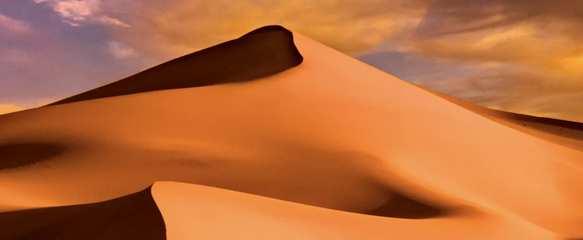

Stefan from German
A perfect Cairo day – ancient wonders and breathtaking views!"
I only had one free day in Cairo, and this tour was the perfect choice Being picked up from my accommodation and dropped off afterwards made everything so easy Our guide and driver were
both very professional and knowledgeable Standing in front of the Pyramids was surreal, and the views from the Citadel were stunning A great mix of history, comfort, and expert guidance –highly recommended!
Soha from Egypt
Thank you so much for giving us
the best experience we could dream of on Lake Nasser
The past few days went so peacefully but we understand your hard work to make it happen. Special thanks to Hamza for feeding us our best holiday meals
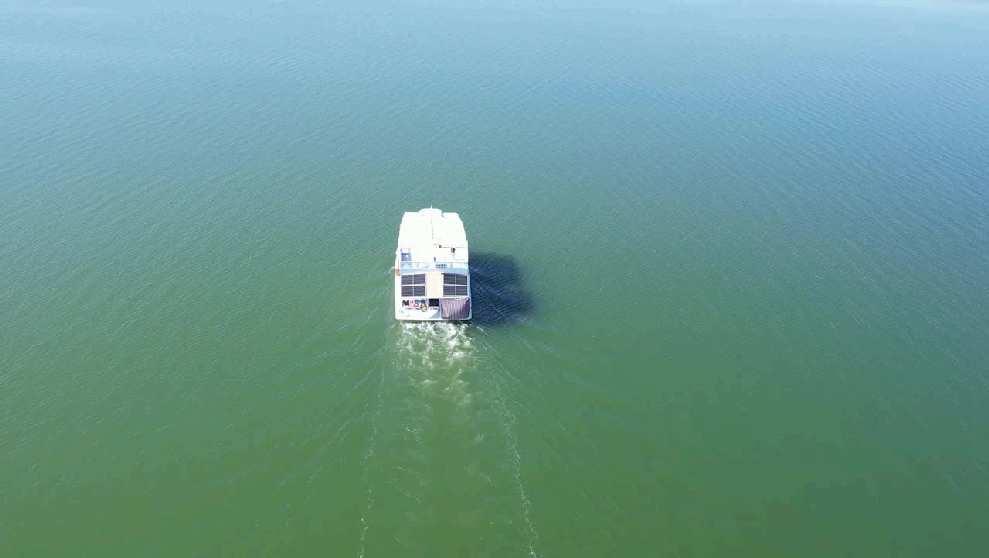

By Dorothee Rieche
In the heart of Egypt’s bustling capital, a fire that broke out late on Monday, July 7, at the iconic Ramses Central building
quickly turned into a national emergency. The telecommunications hub—originally inaugurated in 1927 by King Fuad I—was engulfed in flames, sending plumes of smoke over downtown Cairo and triggering a ripple effect across the country’s most sensitive infrastructure.
The fire, which claimed the lives of four individuals and injured 39 others, did not just torch an old building—it paralyzed Egypt’s digital backbone. The Ramses Central is a cornerstone of the country’s telecommunications network, serving as a major interconnection point for internet, voice, and data services for the nation’s top providers, including Vodafone, Orange, WE, and e&.

halting key operations.
redundancy in core systems.
As authorities scrambled to contain the blaze, critical services collapsed one after another—from disrupted mobile and internet access to the unexpected shutdown of the Egyptian Exchange and bank branches
The incident has raised urgent questions about the vulnerability of Egypt’s centralized telecom infrastructure. As the country continues to modernize its digital economy, experts say there may be a need for greater decentralization and
We experienced the consequences of the fire ourselves, and it's quite a strange feeling when suddenly not even your phone works anymore, let alone any other means of communication. However, it really only took three days for daily life to function more or less normally again.



A loyal reader drew our attention to this book, which offers a multifaceted perspective on Egypt’s history — one that also helps to better understand the so-called modern era. And since the Egypt Exploration Society is hosting special events this year in honor of Amelia Edwards, we didn’t want to keep this book recommendation from you.
On 7 June 2025, we mark 194 years since the birth of Amelia Ann Blanford Edwards (1831–1892), founder of the Egypt Exploration Society (1882) and a pivotal figure in British Egyptology — even called the 'Queen of Egyptology' upon her passing. In her will, she also endowed the first chair of Egyptology at University College London.

Born to an Irish mother and a former army officer turned banker, Edwards was educated at home and showed literary talent early on, publishing her first poem at 7 and her first story at 12. She went on to contribute poems, stories, and articles to numerous magazines.
Her celebrated travel book “A Thousand Miles Up the Nile”, written in the late 19th century, recounts her journey through Egypt by boat. It combines vivid descriptions of landscapes, ancient sites, and local customs with personal anecdotes and cultural insights.
The narrative begins in Cairo at the lively Shepheard’s Hotel, where travelers gather from all over the world. Early chapters describe the bustling bazaars, grand monuments like the Great Pyramid, and Edwards’ reflections on the contrasts between the modern world and ancient Egypt. Her engaging storytelling blends historical observation with the thrill of discovery.
Edwards' travels awakened her to the growing dangers facing Egypt's ancient monuments due to tourism and modern development Determined to protect this heritage, she became a passionate advocate for archaeological preservation In 1882, together with Reginald Stuart Poole of the British Museum, she co-founded the Egypt Exploration Fund (now Society), serving as joint Honorary Secretary until her death 14 years later
Amelia Edwards died on 15 April 1892 in Weston-super-Mare, Somerset She bequeathed her collection of Egyptian antiquities, her library, and £2,500 to University College London, establishing the Edwards Chair of Egyptology She is buried at St Mary’s Church in Henbury, Bristol
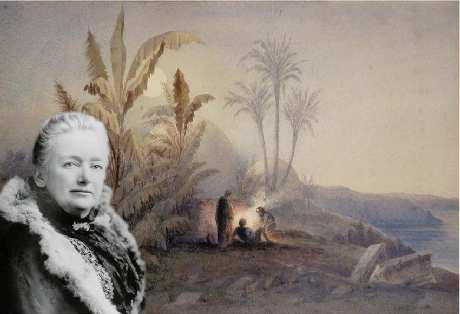


When we cruise along Lake Nasser, there’s one place we always slow down for: a silent, sunbaked ruin near Garf Hussein. Once built for Egypt’s president, today it stands deserted and weather-worn — a shell filled with stories and echoes of the past.
A Presidential Dream in the Desert?
In 1981, the Sadat Rest House was constructed as an official presidential retreat for Anwar el-Sadat during visits to Nubia. Designed by renowned Egyptian architect Hassan Fathy, the complex was completed shortly before Sadat’s assassination that same year. It remains uncertain whether he ever set foot inside. What is certain: the
house was never used for its intended purpose.
Fathy’s design was thoughtful and rooted in tradition. The ensemble consists of three separate zones: one for presidential security, one for family and guests, and one for the President himself. Inspired by caravanserais, the layout features courtyards, arcades, and a terrace overlooking the lake — simple, functional, and elegant.
Remarkably, Hassan Fathy was in his early eighties when he designed the Sadat Rest House — one of his last public commissions. Despite his age,

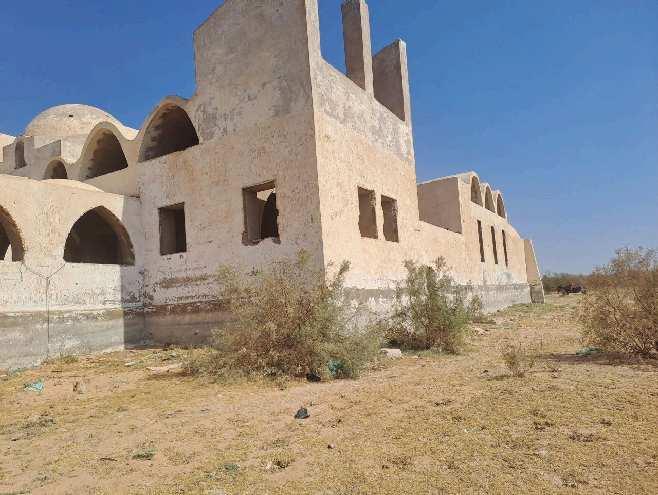


his vision remained as sharp and grounded as ever. Fathy believed buildings should emerge from the lives and traditions of the people who inhabit them. He rejected imported modernism in favor of local materials, climate-sensitive design, and cultural meaning.
"You must start right from the beginning,” he said, "letting your buildings grow from the daily lives of the people… respectful to the skyline and humble before the seasons."
The Sadat House reflects this philosophy: unpretentious, harmonious with its surroundings, and rooted in Egyptian identity.
Sadat’s Story – and Legacy
Anwar el-Sadat became Egypt’s president in 1970 following the death of Gamal Abdel Nasser. He led the country through the 1973 war and shocked the world with his peace initiative toward Israel.
His visit to Jerusalem in 1977 and the Camp David Accords in 1978 changed the course of Middle Eastern diplomacy — and earned him both the Nobel Peace Prize and bitter enemies.
On October 6, 1981, he was assassinated during a military parade in Cairo. His wife Jehan — a tireless advocate for women’s rights — was just meters away. She later wrote in her memoir ‘A Woman of Egypt’ : “He died believing in peace. I have never stopped believing too.”
Today, the Sadat Rest House stands in ruins. Its courtyards are quiet, its walls crumbling under the desert sun. When we stepped ashore during one of our Lake Nasser tours, it took imagination to picture its past: guards pacing the outer quarters, guests strolling beneath shaded
Shepherds with their herd in Nubia
Another tale says that President Sadat had Hassan Fathy build a house for the exiled Shah of Iran
arcades, the President watching the sun set over the water.
A local tuk-tuk carried us from the boat to the house and back again
As we drifted away, the Sadat House faded into the shimmering light — a forgotten chapter, still whispering through Nubia’s winds
It's a tragedy that such a unique piece of architecture is left to decay instead of being preserved as part of Egypt’s heritage
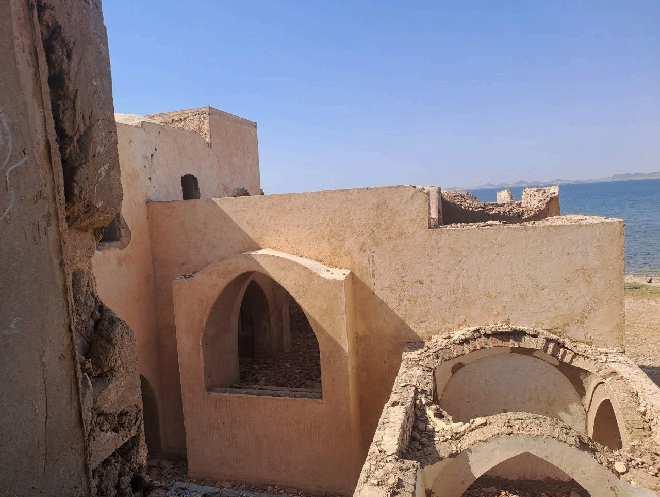

In the memorable year 2020, our friend Tetjana Kruk brought a remarkable project to life: a ballet production of “The Little Prince”, performed in Alexandria
She directed a stage adaptation of ‘The Little Prince’ – bringing Antoine de Saint-Exupéry’s poetic story to life through movement, music, and expression. “If you want, I’ll send you a short video,” she smiles – and we highly recommend watching it.
Member of the International Union of Choreographers
Member of the International Dance Council CID UNESCO
Member of the World Artistic Dance Federation WADF
Judge of the international category license WADF
Contact person of (International Dance Organization) IDO for Egypt for Performing Arts (PA)
Multiple Member of the jury of International choreographic competitions in Egypt, Russia (Moscow), Greece (Athens), Austria (Vienna), Ukraine (Odessa), Serbia, Bosnia and Herzegovina
Organizer of the International Dance Camp “Egypt Dance Camp”


Interested to join our next event with Tetjana in February 2026?
“Ballet in the dunes”
Reserve your early bird ticket now: service@dabuka de
Read our interview with Tetjana Kruk on page 38 of this issue
“One sees clearly only with the heart What is essential is invisible to the eye. ”
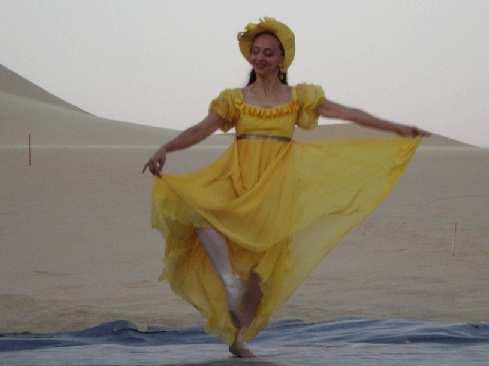

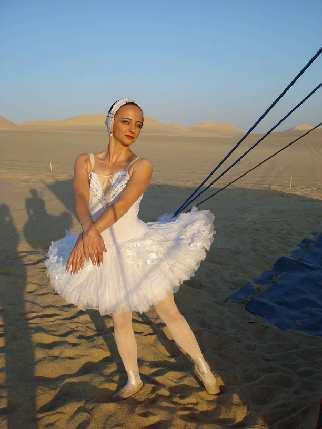

The Little Prince
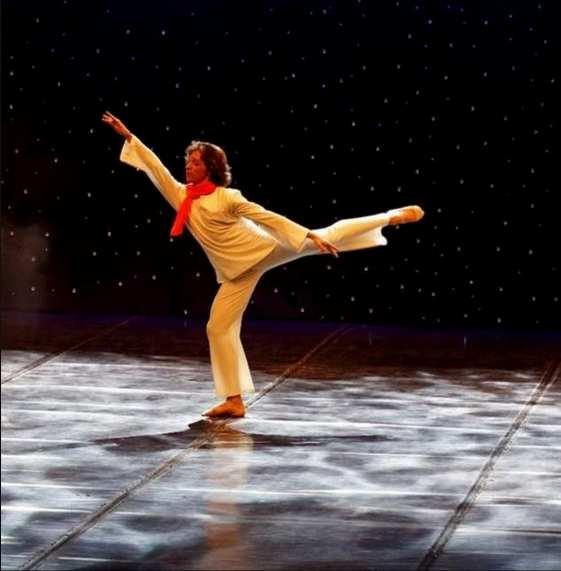


The Northern Gallala Mountains are a distinctive mountain range located in the northeastern region of Egypt, stretching along the Red Sea coast and bordering the Suez Canal
Covering an area of approximately 3,000 square kilometers, these mountains are part of the Eastern Desert The Northern Gallala
Mountains are particularly notable for their geological and historical importance, with unique rock formations and proximity to ancient trade routes
Geological
Geologically, the Gallala Mountains are primarily composed of limestone, granite, and sandstone. These rock types indicate the region's ancient history, as the
area has undergone various tectonic processes over millions of years The formation of the mountains is believed to have occurred during the Mesozoic Era, with the rise of the Red Sea Rift contributing to the region's topographical features The rugged terrain and varying elevations make the mountains a fascinating site for geological studies

The highest peaks in the Northern Gallala range rise to about 800 meters above sea level The area is characterized by a dry, arid climate, typical of desert landscapes. Despite the harsh conditions, the region is home to wildlife species adapted to desert life, such as foxes, wildcats, and various reptiles Flora in the area is sparse, with hardy plants like acacia trees and thorny shrubs growing in isolated patches
Historically, the Gallala Mountains were of strategic importance, particularly in ancient times Their location near the Suez Canal and the Nile Valley made them key for trade and military movements Archaeological evidence, including pottery and tools, provides insight into the lives of early desert dwellers who relied on the mountains for resources like water and shelter

trips to the area Most of the interior remains virtually unknown to the broader tourist market
Though the Gallala Mountains offer stunning landscapes, the region remains largely unexplored by tourists. Only a few companies, typically situated along the narrow tourist corridors of Egypt, offer
The area is also important for modern mining, particularly for phosphate, used in agricultural fertilizers
While mining activities have been limited, the region still holds potential for further exploration of its mineral resources.
In conclusion, the Northern Gallala Mountains, covering around 3,000 square kilometers, combine geological, historical, and ecological significance
Their rugged terrain, rich history, and strategic location make them a vital part of Egypt's desert landscape, offering both educational and recreational opportunities for those interested in the country’s natural and cultural heritage

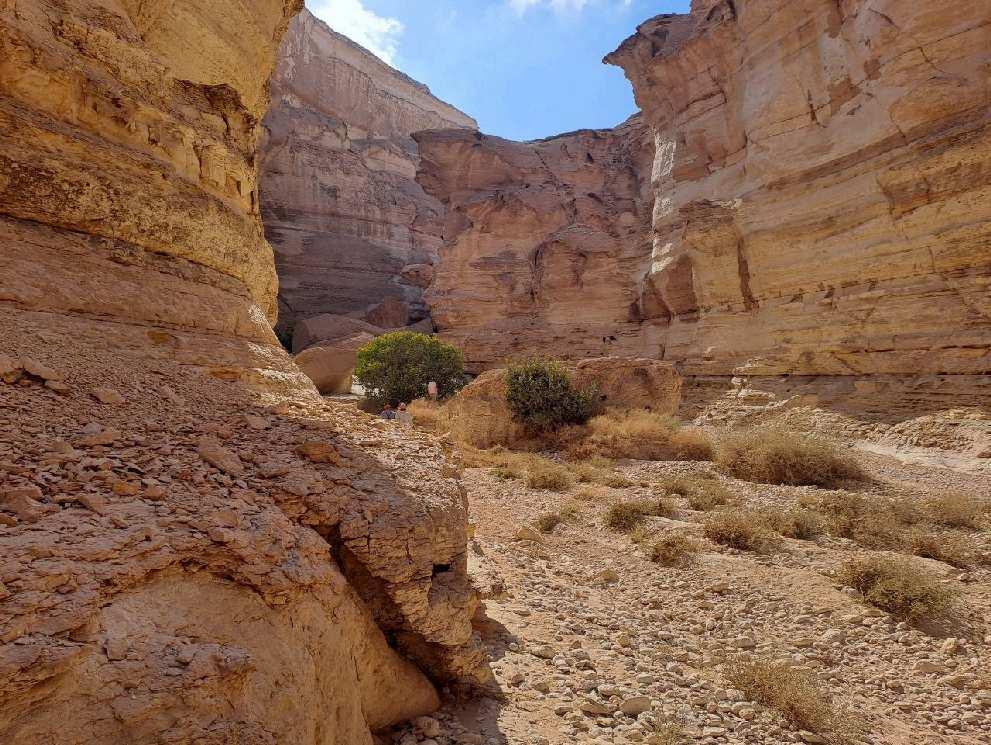
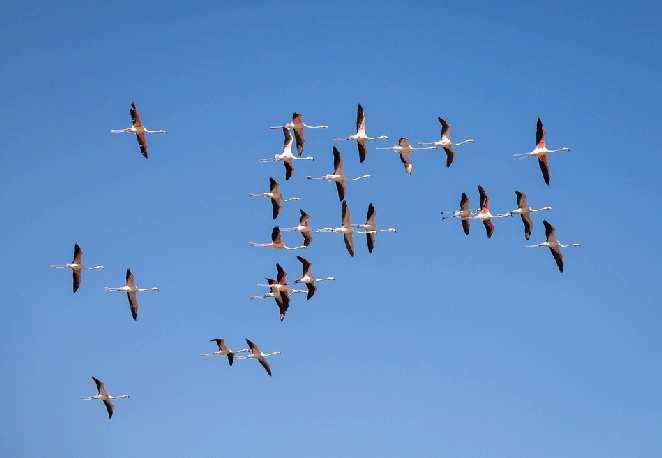
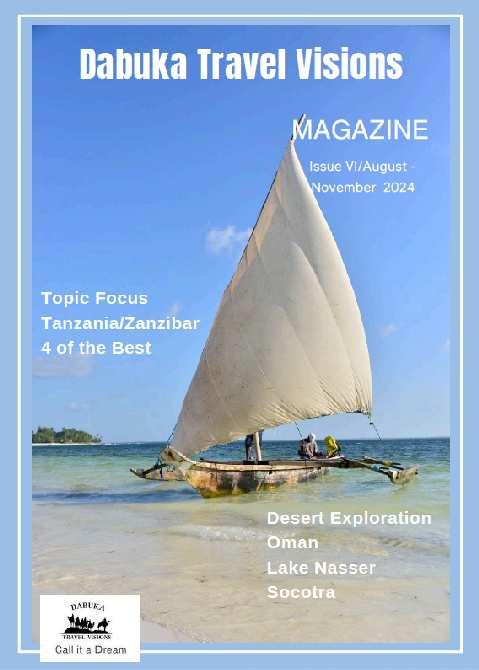
The idea for our magazine was born in Melbourne I was visiting my son, who had been living there with his family for some time and was also working in the tourism sector Those were fulfilling days, with time and space for creativity
It was during this time that the thought of creating a magazine emerged Today, we take a brief look back and share what has been – and where the journey might still lead.
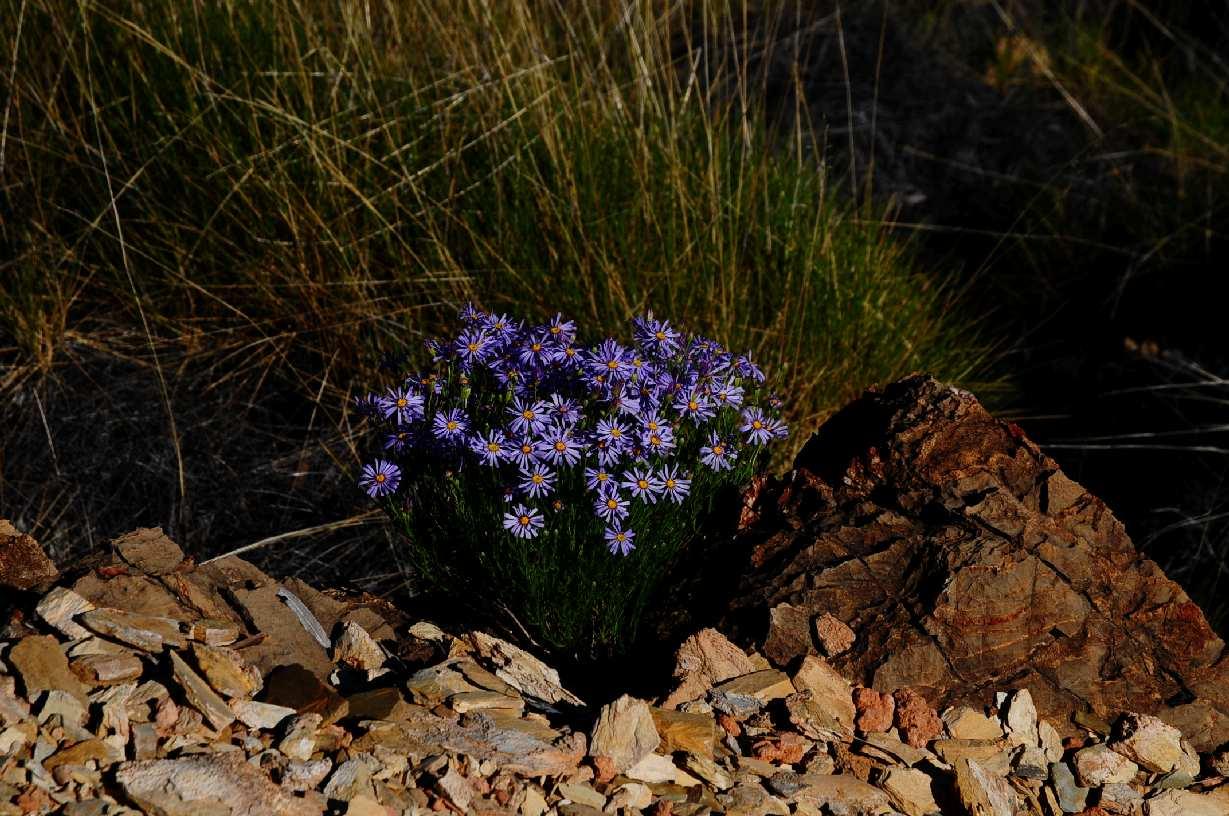


The magazine started as an experiment, an invitation to tell travel stories differently – born out of love for the places and the joy of sharing
At that point, we had already decided to build a boat, and the process had started earlier that year
It was actually constructed near Tanta, beneath a bridge where, legend has it, a crown prince was once deliberately made to fall
Not a bad omen, just a story within a story.
After an odyssey of transport by land and water from Cairo to Aswan, and across the High Dam, the “Dabuka Blue” now lies on the shores of Lake Nasser (when it’s not underway)
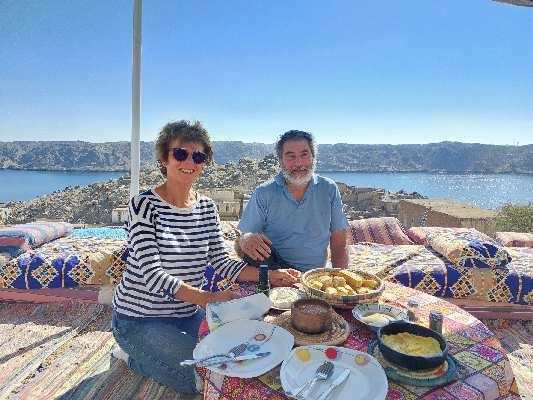


It accompanied us through every issue of the magazine, costs far more time, money, and nerves than we ever imagined – but it exists, and we’re curious to see where the journey will take us next.
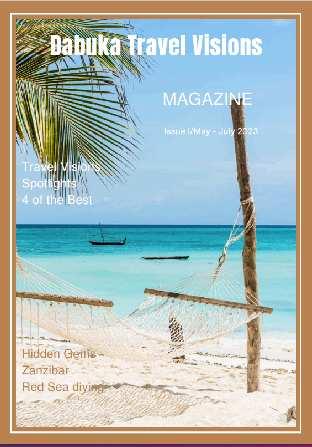
s
Back then, Oman was still just an idea, a beautiful travel dream that had to be made real.
There are many reasons why this country is worth visiting at least once in a lifetime.
The Omanis are among the friendliest people on earth; Nature and culture are inspiring and deeply calming; The food is a culinary delight, Oman is also one of the cleanest countries in the world.
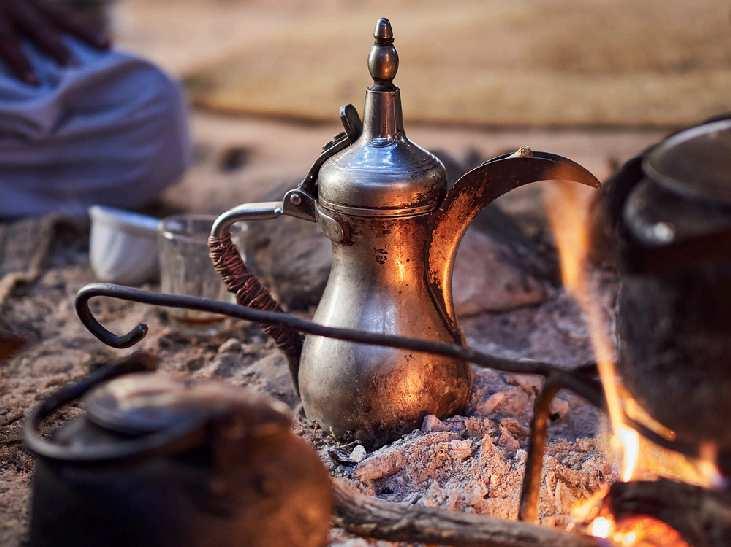
Amr lived and worked as a CEO in a tourist company in Oman since 2015
Over 10 years he has built up superb relationships locally and International
Today, Amr is part of our team and serves as our local partner for Oman Thanks to personal relationships, we are now able to offer authentic journeys to this region
Contact: : +20 101 506 9061
Email: service@dabuka de www dabuka com
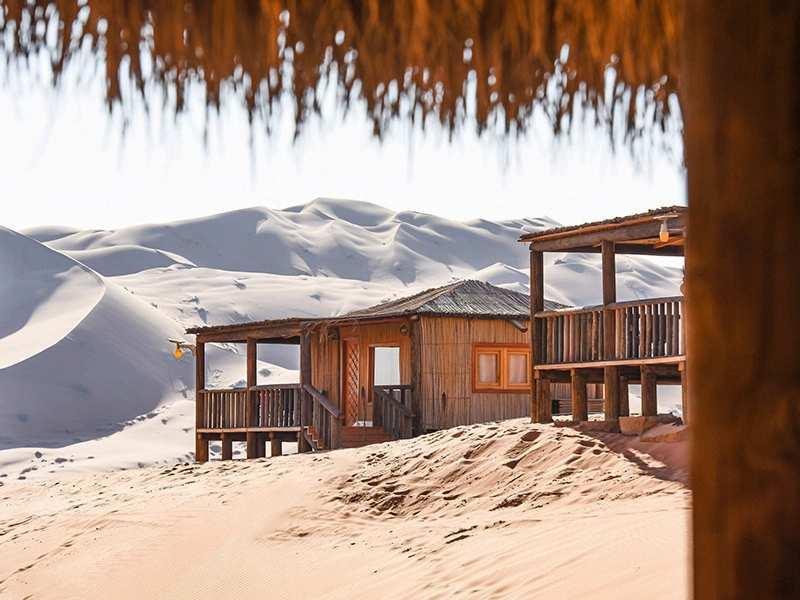






Our desert tour from Cairo to Wadi El Hitan, the Abu Mohareq dunes, and the Djara Cave has firmly established itself in our program and is now one of our signature journeys.
Then as now, it's also a favorite destination for stargazers. Egypt is said to have the shortest distance to the sky, which offers ideal conditions for observing the stars.
The next opportunity will be the lunar eclipse in September 2025
Join us!


For us, “hiking” has always been more than just a marketing term – it's a sensory-rich way to experience travel
Guests from all over the world enjoy movement, and our tours offer plenty of it
A Bedouin guide leads our groups through the Gallala Mountains in the Eastern Desert. He explains the local flora and fauna and provides delicious meals and beautiful sleeping spots under the stars.
Contact: : +20 101 506 9061
Email: service@dabuka de www.dabuka.com




With our “Travel Calendar,” we aimed to highlight one tour per month for the upcoming year, each selected to match the season particularly well Stories, background info, and practical tips – all meant to bring our offerings to life
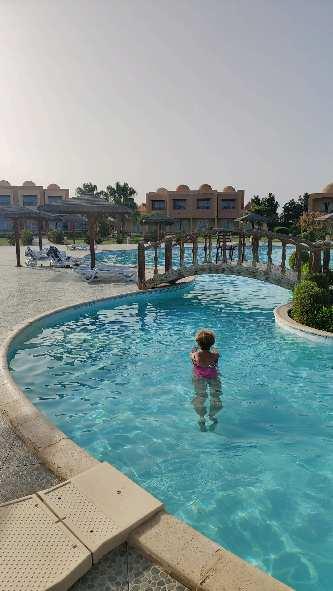
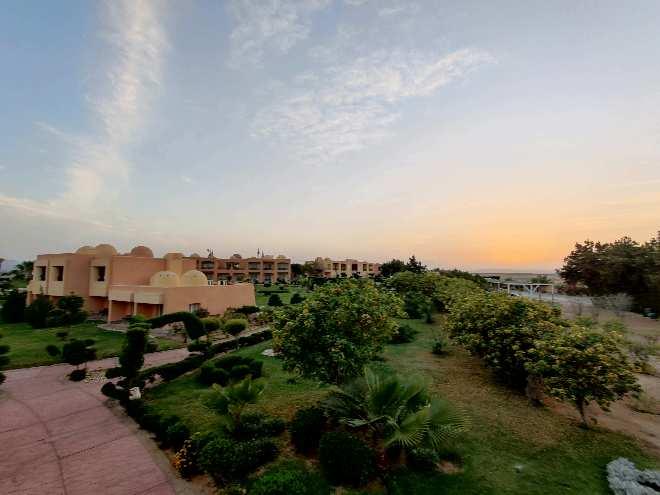
In this issue, we also take a closer look at the Wadi Lahmy Azur Resort – a hotel that remains one of our “heartfelt places ”
Located 200 km south of Marsa Alam, already heading toward Sudan, this paradisiacal resort has consistently delighted our guests with its warm hospitality, excellent food, natural beach, and peaceful atmosphere
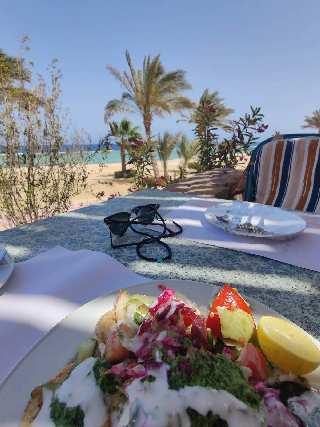



Some hotels are more than just places to stay – they offer a true retreat for body and soul
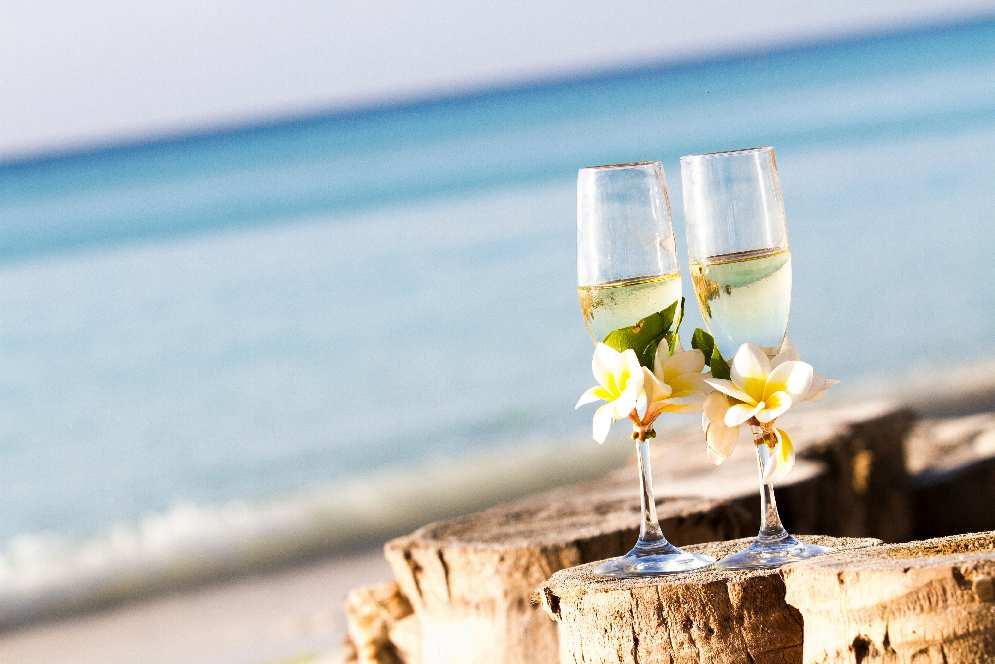

Our feature on Zanzibar as a honeymoon destination and Tanzanian highlight was incredibly appealing – but unfortunately, demand has remained low.
Recently, however, we’ve seen growing interest from Germany – so we’re staying on it
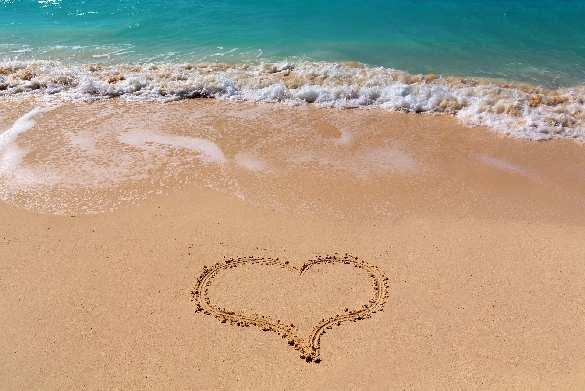


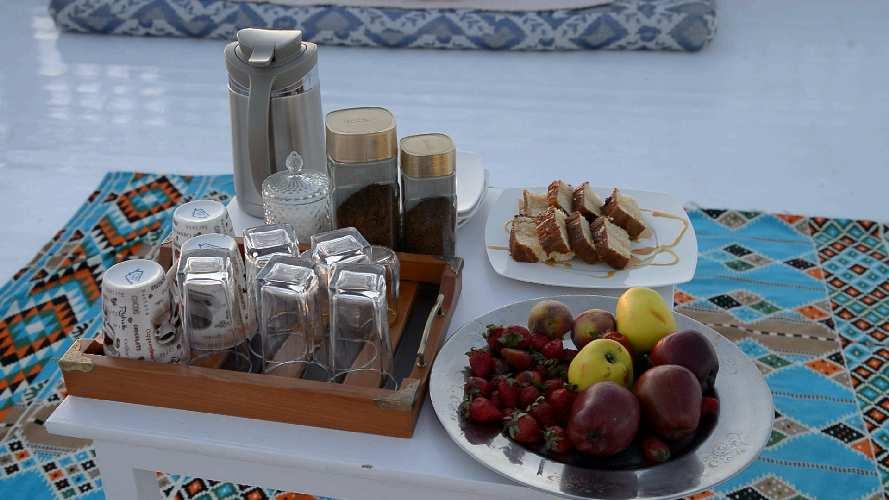
“Dabuka
At the end of September, our boat completed its maiden voyage and now regularly cruises between Aswan and Abu Simbel, hoping to welcome many international guests
There are even films about the boat that have aired on Egyptian television The Lake Nasser tour has already made quite a few people happy
Unfortunately, some personal disappointments have also been part of its story – the kind that take time to process Some dreams must be fought for – but we’re determined to do so
Considered one of the most beautiful oases in Egypt, we are in close contact with a private eco-lodge there – a place to stay and a base for exploring the surrounding desert
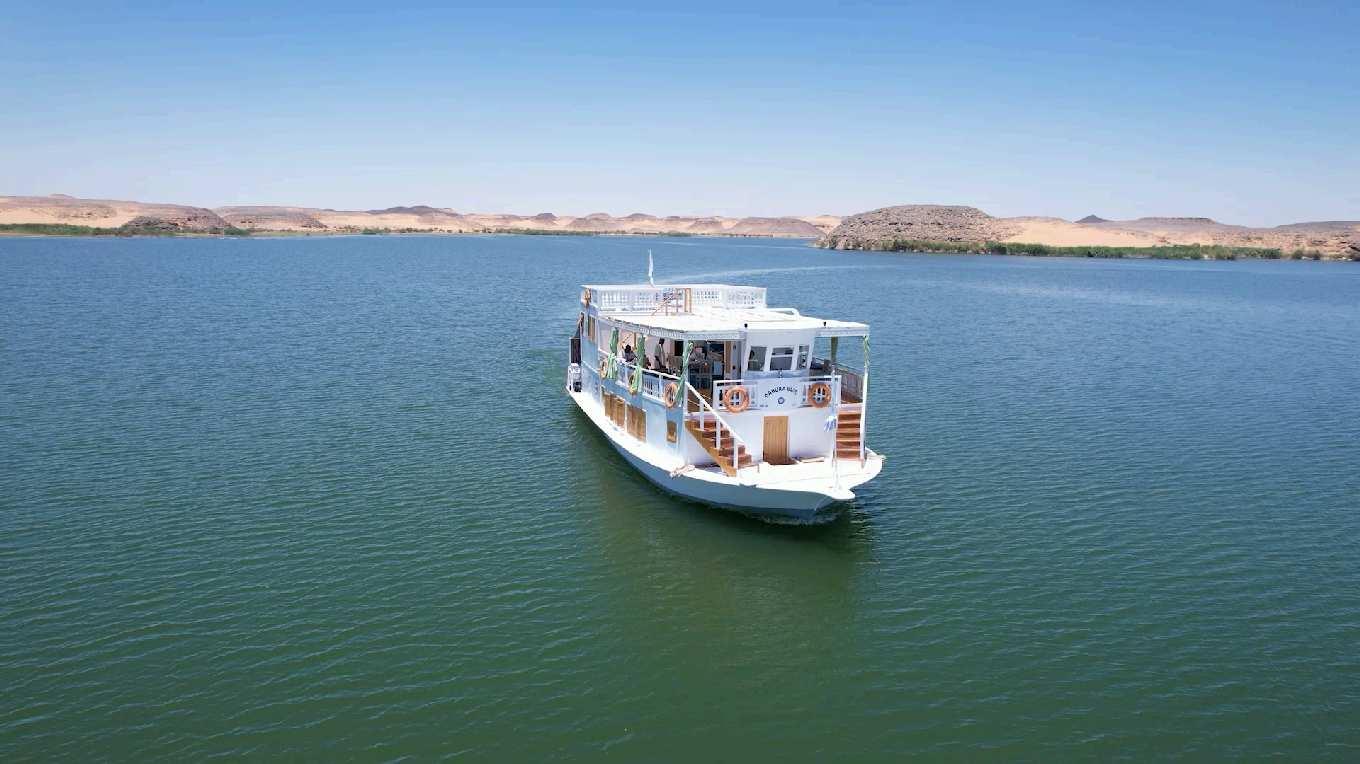
And if you’d rather head into the sand than the water, the Dakhla Oasis offers wonderful opportunities
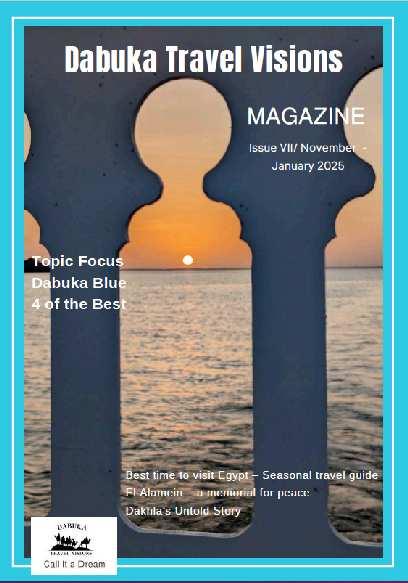


– Close, but Not Easy
Issue 8 / February – April 2025
Jordan was a new addition to our portfolio. We traveled there ourselves – and were thrilled Especially by Amman, which welcomed us with warmth.
Even though January is truly cold there, it’s worth wandering the hilly streets, visiting the Royal Automobile Museum, or taking a trip to the Dead Sea, where a surprisingly mild climate awaits
The theme of “hiking” is also present here, with a multi-day trek from Dana to Petra being one of the highlights.
But these journeys will remain


Sadly, current political developments have made the offering more difficult

Contact: : +20 101 506 9061

Email: service@dabuka de www dabuka com
Sometimes Dabuka simply brings dreams to life Back in 2012, we hosted our first ballet and music evening in the sand desert – an unforgettable memory for all involved.
Since then, many events have followed – each one unique in its own way
Recently, we hosted a piano concert in the Eastern Desert, paired with fine dining

The Nubian chefs from Dabuka Blue traveled especially to prepare exquisite meals The dress code for all guests was blue and white – like our boat
This issue represents what drives us: creating spaces no one has imagined before
It was also the first issue we published in German – so, in a way, it became a second Issue 1
Circles are closing, and new perspectives are sprouting from the ground almost daily


El Agamy – If you search for this name on Google, you'll simply find that it’s a town located 12 km from Alexandria Those are the facts
But for us, this place is filled with stories Tarek’s family has owned a small holiday house there since his early childhood Back then, Agamy was still a quiet, well-kept seaside resort and a popular getaway for Cairo’s residents seeking refuge by the sea during the summer months
Tarek remembers many summers full of sandcastles and freedom with friends
When I first saw the house, it was almost a ruin The garden was completely overgrown, turned into a dumping ground The house itself still had some furnishings, but it was falling apart in every way
Agamy, too, was no longer the peaceful beach resort it once had been It had become more or less a suburb of Alexandria – loud, crowded, hectic The holidaymakers of the past had long since moved on to the stylish compounds now known as “the Sahel ”
Still, this place spoke to me
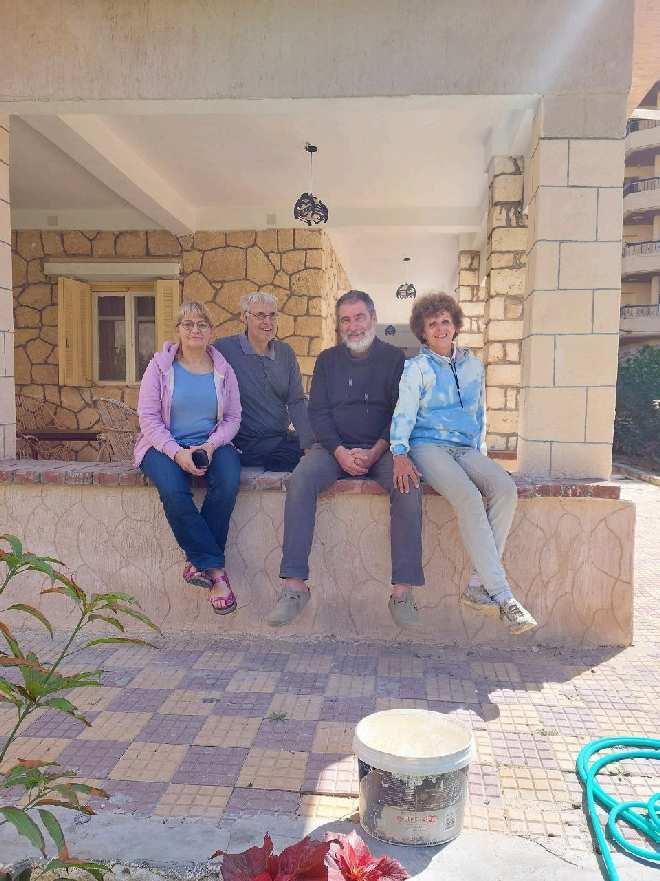


immediately The house was a little off the beaten path, so it was quieter than other areas The layout, the bright stone it was built from, and the open kitchen leading into a large living and dining area –it all sparked my imagination
all been completely renovated and newly furnished – in some parts, even more beautifully than our home in Cairo
It’s just a five-minute walk to the beach A soft, white sandy beach where you can walk for miles – or simply plunge into the turquoise waves.
a lovely walk in the Montaza Gardens; a drive to a nearby famous fish restaurant; or an excursion into the history of El Alamein
And so we decided – in a way, against all reason – to bring the house back to life It was a big undertaking, but we did it Today, Agamy is a retreat for us from everyday life The newly landscaped garden blooms in every season, and a tall hedge shields us from the outside world
The two bedrooms, two bathrooms, kitchen, and living-dining area have Wreckage of a long-sunken ship
A friend from northern Germany, who often accompanied us there, never understood how we could find the water too cold – he would jump in no matter the season
A particularly special experience was a ride on the tram through the heart of Alexandria
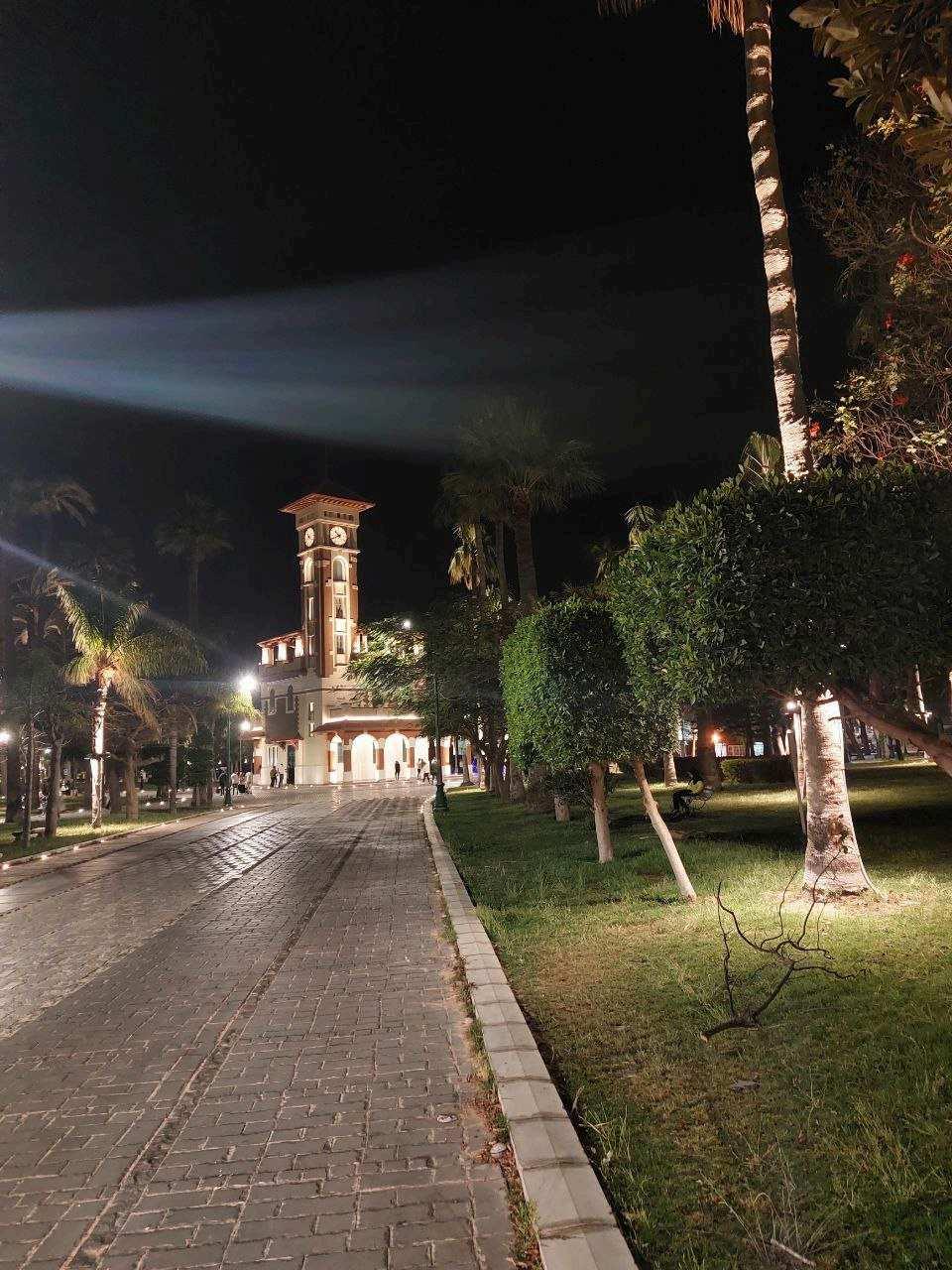
Rosetta – home of the famous Rosetta Stone – is also within reach, and if you’re planning a longer journey to Siwa, you’re already much closer than from Cairo

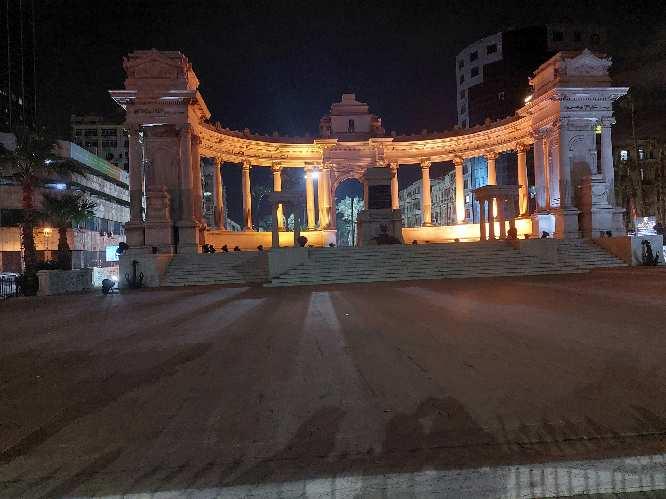
The surrounding area is also full of interest For example, a night trip to Alexandria, where you can take
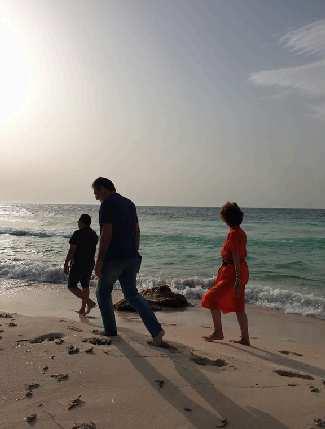
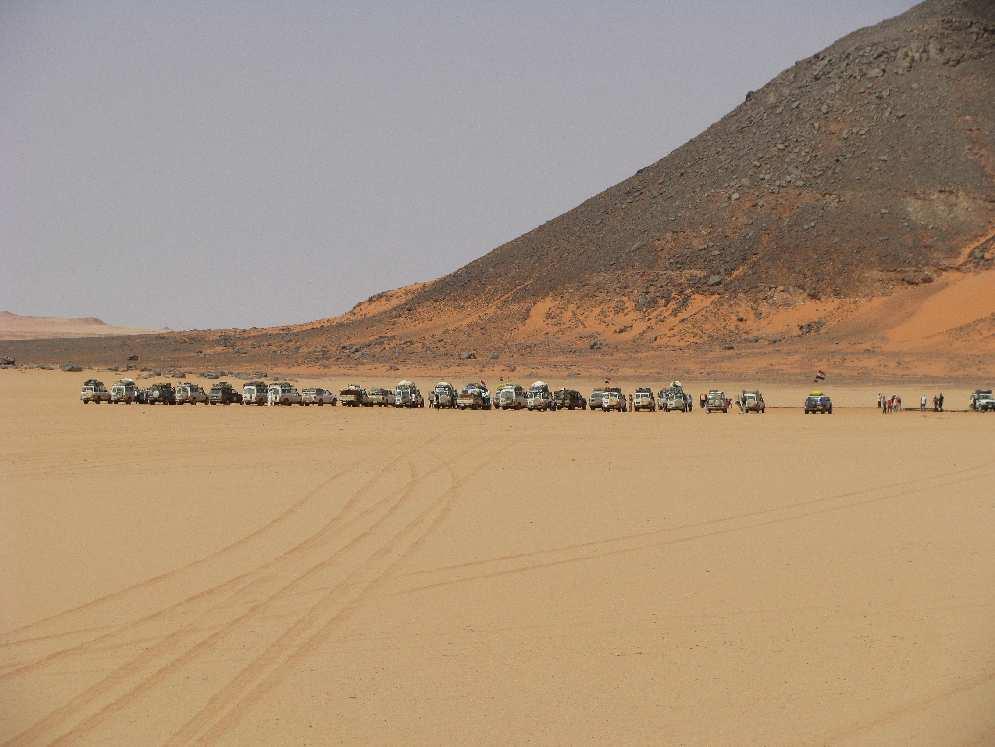
As a reminder: The Egyptian Revolution of 2011, also known as the ‘January 25 Revolution’ , began on January 25, 2011, with mass protests against the government of President Hosni Mubarak
Inspired by the Arab Spring, these protests called for social justice, freedom, and the overthrow of Mubarak, who had ruled the country with an authoritarian hand since 1981 The demonstrations, which lasted several weeks, ultimately led to Mubarak’s resignation on February 11 and the transfer of power to the Supreme Council of the Armed Forces
In 2012, Egypt held its first free presidential elections, resulting in the election of Mohamed Morsi of the Muslim Brotherhood
However, in 2013, he was overthrown in a military coup led by General Abdel Fattah el-Sisi
Since then, Sisi has governed the country The democratic changes
many had hoped for never truly materialized
This period also marked a turning point in Dabuka’s story
Tourism during times of crisis requires endurance—and hope for better days Those days eventually returned, not only in the form of classic travel but also through the special projects that have always been part of Dabuka’s unique identity:
2011–12: “The Planet of Sparrows”
A film was produced
A Kurt Mayer production, supported by Dabuka
2013: Rowing on the Nile
A Dutch-German-Egyptian collaboration: rowing from Luxor to Cairo
2014: The Prince Kamal Expedition
This expedition commemorated the anniversary of the memorial plaque of Prince Kamal El Din Hussein, who discovered the Gilf Kebir Plateau in Egypt’s Western



Contact: : +20 101 506 9061
Email: service@dabuka de www dabuka com
Desert in 1925 He was also the first to use automobiles for deep desert exploration in this region
The idea:
A historic event held from March 14 to 26, 2014, under the auspices of the Ministry of Tourism.
In the Hollywood film ‘The English Patient’ (winner of nine Oscars in 1996), the main character was shown transporting Prince Kamal El Din’s plaque to the Gilf Kebir Plateau in 1933 This expedition followed in the footsteps of those early explorers Renowned national and international scholars joined the journey as speakers, presenting engaging lectures on relevant topics. The expedition was organized by our TEAM.

This desert expedition, two years in the making—and the last before Gilf Kebir was closed to most visitors—was a milestone event for all involved
More than 34 off-road vehicles, a chartered plane from Cairo to Kharga, an opening ceremony at the Automobile Club and a closing ceremony at the Mena House Hotel; journalists from all over the world; logistics ranging from daily fresh bread to toilet tents—and the wonders of a breathtaking desert landscape.
Levison Wood attempted to become the first person to walk the entire length of the Nile
4,250 miles across six countries
Dabuka supported the expedition during the Egyptian leg
2015–17: Pyramids Scanning Project
Logistical support for the FrenchCanadian project
To this day, Dabuka looks back on turbulent times. What we offered was never conventional
And yet, at just the right moments, the right people crossed our path—bringing ideas, setting new directions, and helping us bring visions to life
Over time, the original focus on the desert expanded to include culture, other countries—and our boat Let’s see what’s next!
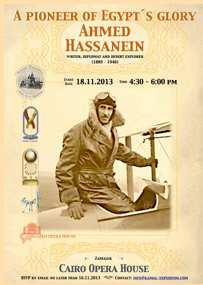
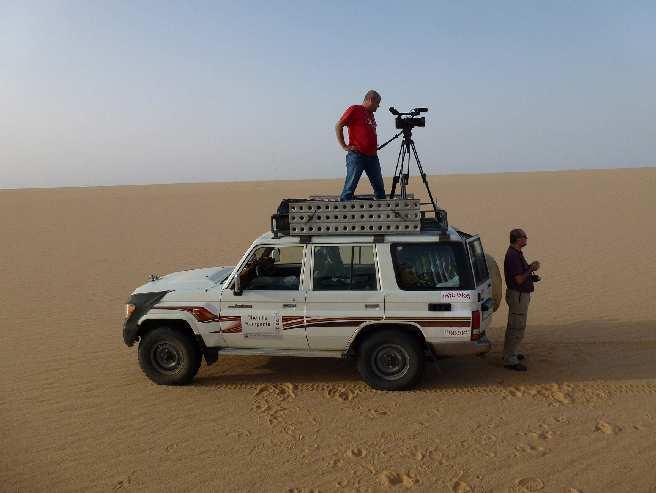

Starting in Rwanda in December 2013, he completed the journey in Egypt in 2014 Sponsored by BBC Channel 4, Wood’s route covered

The world feels loud right now Confusing At times even threatening
Many people are wondering: Is now really the right time to travel?
We say: ‘Yes – if done with a clear head and open eyes ’
Because travel is not an escape reflex It is a conscious choice – for connection, for encounter, for reality
We experience it almost daily: questions, doubts, cancellations –out of concern And at the same time, we know: The reality on the ground is often very different from the images shaped by the headlines.
“Is Socotra really safe?”
“What about the Middle East conflict?”
“Is it even possible to travel to Egypt right now?”
We understand these questions And we don’t answer them from a
distance, but from a place of longstanding experience, close cooperation with our local partners – and a clear principle:
Only those who know a country can invite others there responsibly.
We monitor every region we travel to very closely We’re in constant contact with locals, local partners, authorities, and guides
If a situation changes – due to weather, politics, or logistics – we cancel, postpone, or adjust the itinerary as needed
Our goal is not to travel despite all risks – but to travel with responsibility and sound judgment.
Giving up travel in difficult times means leaving the image of places and people to media narratives –and to fear
We believe: It’s more important than ever to be present
Not out of defiance, but out of trust
Trust in our experience Trust in our partners Trust in the power of real encounters


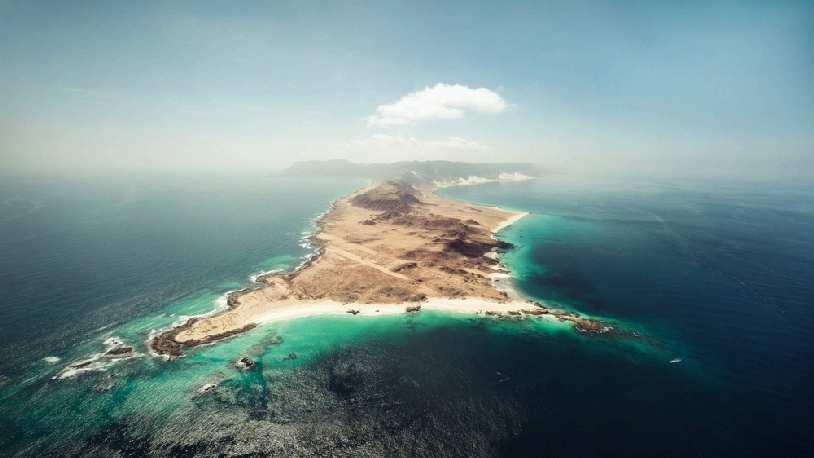
Politically part of Yemen, but located over 400 km off the mainland
The island has been calm and stable in recent years, with its own local administration
The Island is controlled by Saudi Arabia and UAR
Our trips are organized in close cooperation with local authorities and partners
We are using regular, not charter flights to/from Socotra.
Despite its geopolitical location, Egypt is one of the most stable countries in North Africa.
Tourist regions such as Luxor, Aswan, Cairo, the White Desert, and Lake Nasser are well-developed and frequently visited. Dabuka has decades of experience and works with seasoned guides and local teams
We never travel carelessly
Every trip is individually assessed and, if necessary, adjusted or canceled
Guests are fully informed in advance
On-site, our guests are personally accompanied by experienced local staff
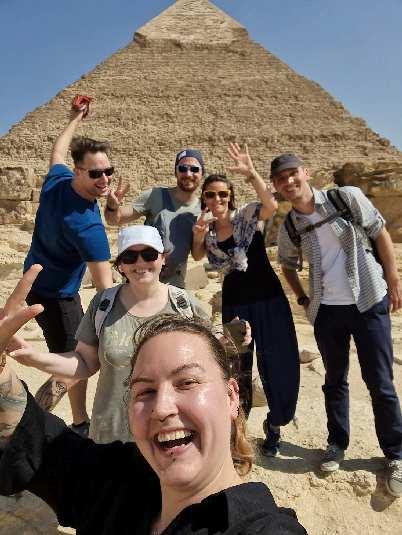


(starting from just 2 people): 8 Days / 7 nights including flights (CAI/ Socotra/CAI)
Price: starting from 2760$/ pp
Possible dates 11. Oct. - 18. Oct. 25 08 Nov - 16 Nov 25

The magic of Lake Nasser is hard to capture in mere words. You may have heard about it, you go there to satisfy your curiosity – and suddenly, you pause
Something is different, something special – in this environment, on this boat It’s not only the wonderful sensation of motion, vastness, and adventure that tingles in your stomach; at the same time, everyday life begins to dissolve You can almost watch your thoughts drift away, making space for the pure enjoyment of the present moment
Whether it's surrendering to the gentle hum of the engine, sitting by the railing and letting the passing landscape work its quiet magic on you; whether it’s enjoying life on board – the shared meals, games, or afternoon tea on the sun deck; or watching the evening anchoring routine, taking a short walk along the shore, and then diving into the infinity of the starry sky
All of this is deeply personal, far from the crowds, and as individual as one could ever wish
This year, our Dabuka Blue once again invites you to celebrate a very special New Year's Eve – with a small beach party, Nubian music, a traditional “lucky cake”, and the warm feeling:
“Life is good.”




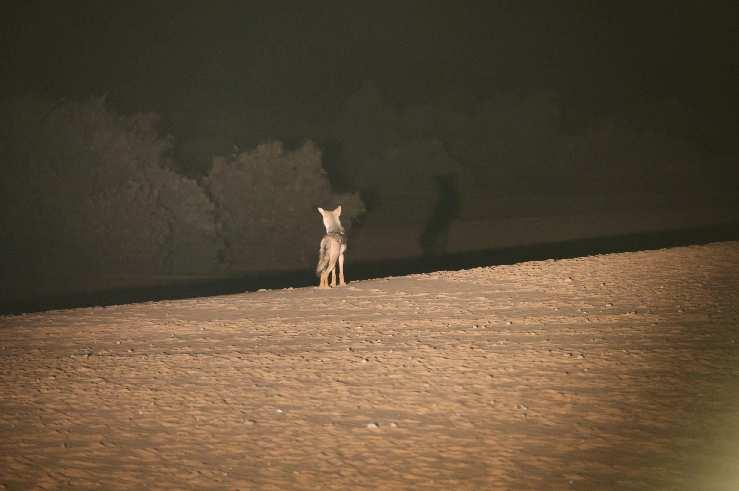

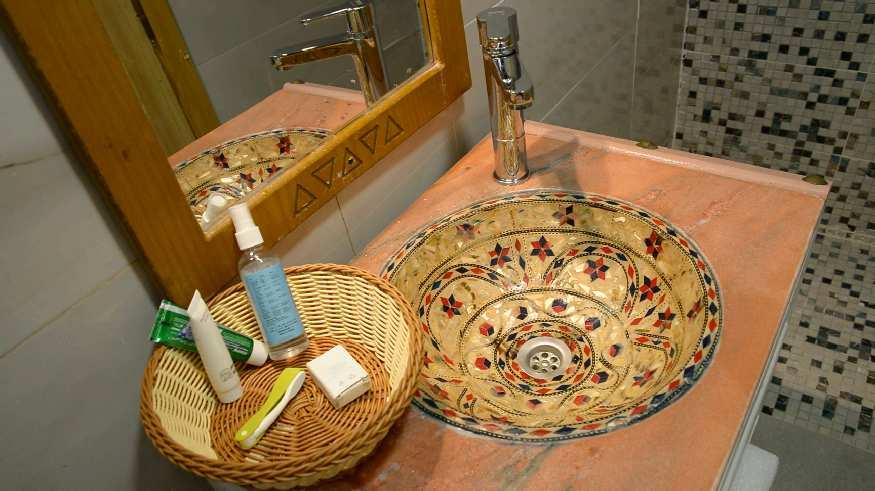
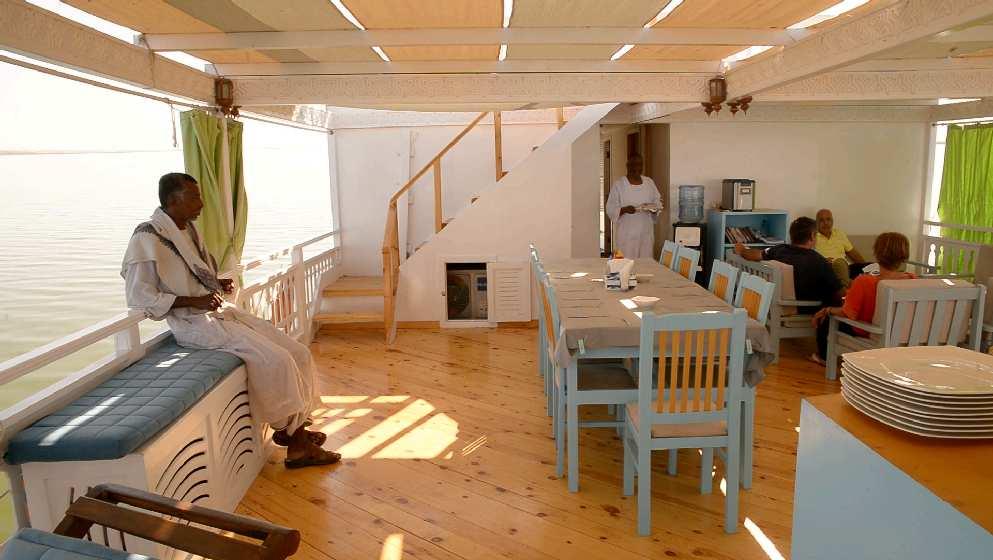

Set in the Indian Ocean between Africa and Arabia, Socotra feels like a place suspended in time The island captivates with its otherworldly dragon blood trees, remote beaches, endemic flora, and a quiet, almost mystical atmosphere. Traveling here means embarking on a journey of discovery –not only through a truly unique natural world, but also within yourself Socotra is not a destination to simply visit – it's an experience that stays with you
“I would have missed out on so much if I hadn’t done this,” she said.
“And now I’d love to go back right away – there’s still so much more to see on Socotra, things we simply didn’t have time for this time.”
In the middle of the Indian Ocean –about 380 kilometers south of Yemen and 250 kilometers east of the Horn of Africa Politically, it belongs to Yemen, but geologically and biologically, it’s closelylinked to Africa

A good friend of ours, who usually isn’t particularly fond of camping or outdoor adventures, had been persuaded by other friends to join this trip Eight days – not too long, something one could definitely manage So she agreed, and we were all curious to hear what she would think
When she returned, she was beaming Such kind people, such a rich and varied experience – and yet never overwhelming, always adapted to individual needs She hadn’t expected that
Contact: : +20 101 506 9061
Email: service@dabuka de www dabuka com
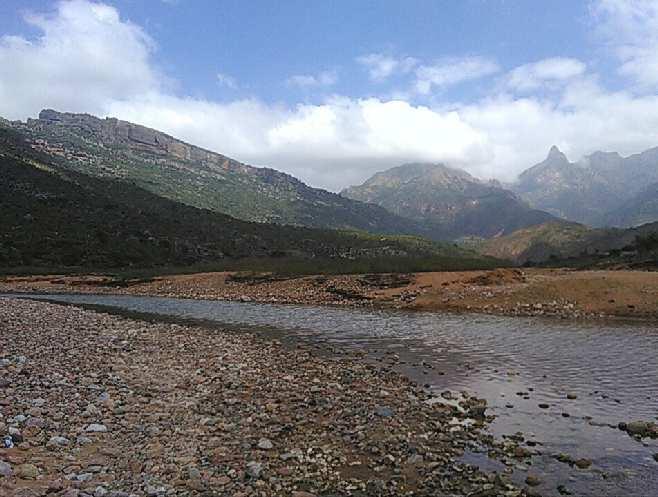
Above all, its nature Around one third of all plant species found here are endemic – including the iconic dragon blood tree, with its umbrella-shaped crown and crimson resin Several bird and reptile species are also unique to the island No surprise, then, that
Socotra has been listed as a UNESCO World Heritage Site since 2008.



About 60,000 people live on the island, mainly in small villages They speak Soqotri, a pre-Islamic South Arabian language that is only spoken, not written Many rely on traditional livelihoods like fishing, goat herding, or date cultivation
The best time to visit is between October and April, when the sea is calm The climate is pleasant all year round
During the other months strong monsoon winds could make the island difficult to access, as flights could be cancelled

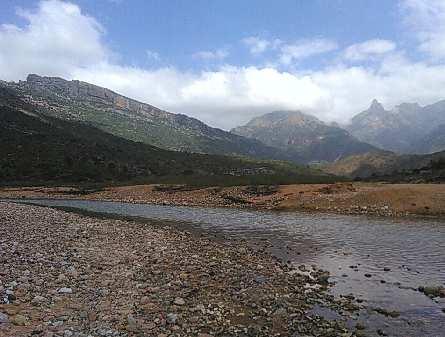
Once a week there are regular flights with stopover in Aden
If you are at least 2 travelers, we can arrange for you a weekly departure from October to March
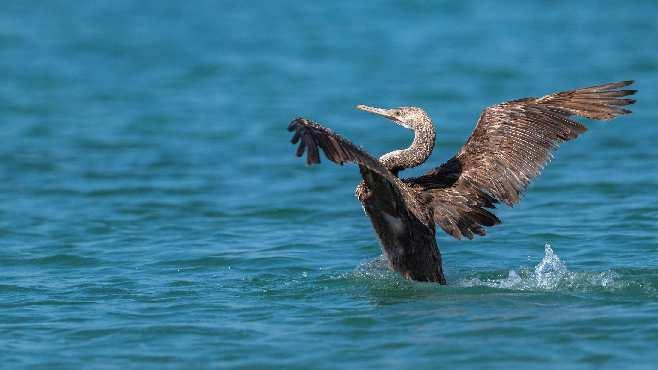




There are many ways to reach Luxor, one of Egypt’s most popular visitor sites We believe it’s worth taking the time to travel through the oases of the Western Desert on the way to Upper Egypt
In children’s encyclopedias, an oasis is generally described as a “ green spot in the hot desert.” That is absolutely correct — but each oasis has its own unique character Some are lively small towns where life pulses vibrantly
The green fields, rustling date palms, and sometimes even hot springs quickly show visitors that this is a place to recover from the desert heat.
The feeling of simply being on the move, discovering something new every day, and following the changing landscape makes this journey a truly special experience
Contact: : +20 101 506 9061
Email: service@dabuka.de www dabuka com
Price: from 1140 $/pp
Duration: 6 Days
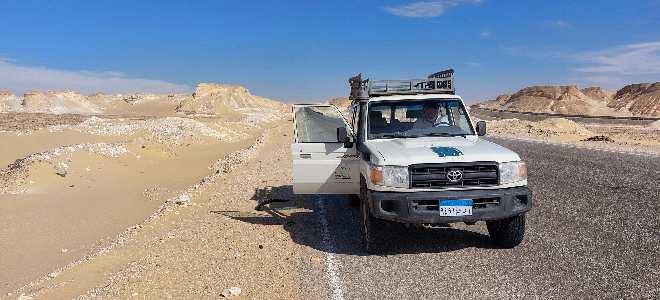
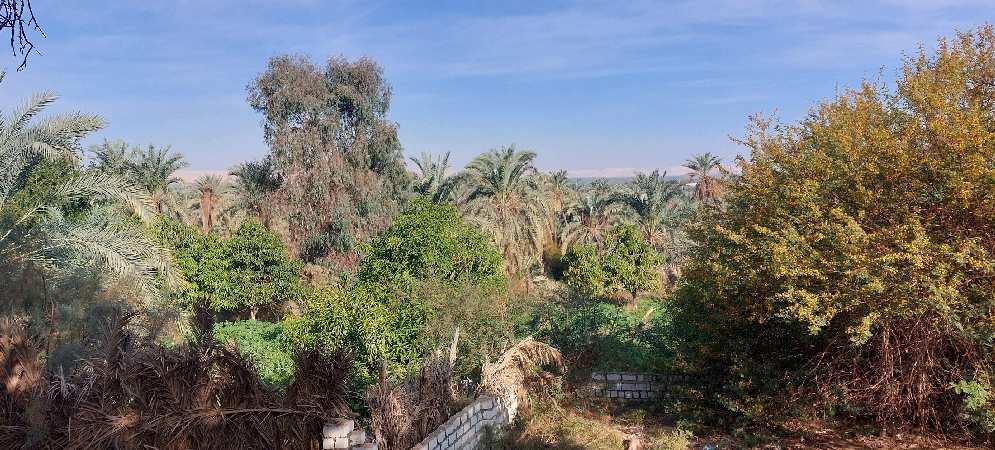

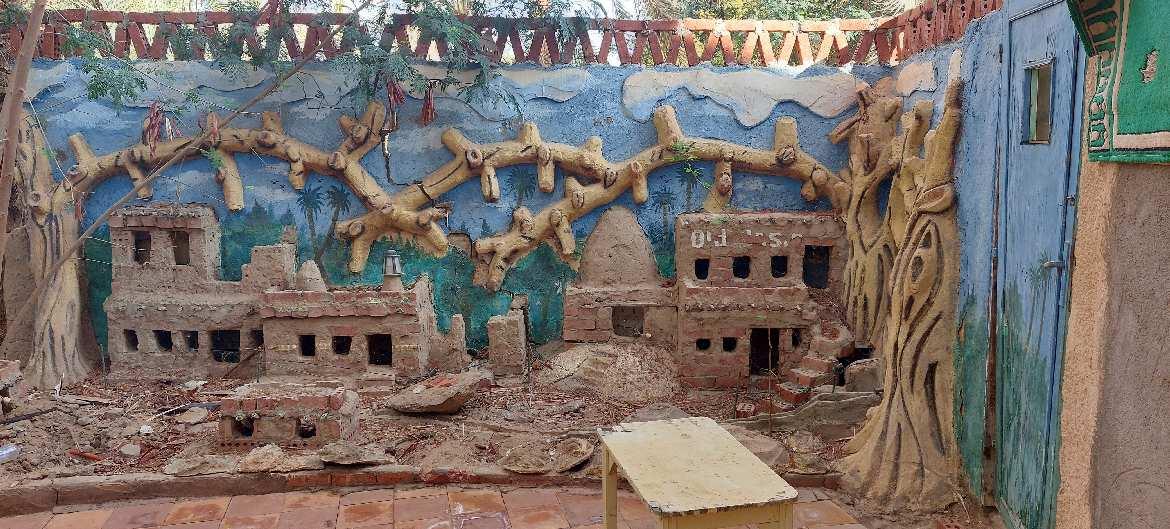
Day 1: From the bustling city to Bahareya Oasis
We leave Cairo behind and enter the mysterious Bahareya Oasis. Discover fascinating museums and golden mummies, ancient tombs, and climb the “English Mountain” for breathtaking views A refreshing dip in the hot springs revives body and soul — the perfect start Overnight under a star-studded desert sky in an eco-lodge
Day 2: Black Desert meets the magical White Desert
Our journey continues through the enigmatic Black Desert to the fairytale-like White Desert. Nature’s sculpted limestone formations appear otherworldly, sparking imagination and awe At Crystal Mountain, glittering minerals shine under the sun A day of contrasts and wonder Overnight at the hotel
Day 3: Into the mysterious Djara Cave and on to Farafra
A cool breeze welcomes us inside Djara Cave, where bizarre stalactites hang like stone dreamcatchers Afterwards, we reach Farafra Oasis, a peaceful desert haven Overnight at the hotel
Day 4: Deir el-Hagar – the “Stone Monastery” and Dakhla Oasis charm
Explore the enigmatic ruins of Deir el-Hagar, a sandstone temple long buried in sand, now revived The village of El-Qasr enchants with traces of ancient life and a timeless atmosphere Relax in the warm springs of Dakhla Oasis Overnight
We can adapt the itinerary, accommodation, and price range to meet individual needs.


at the hotel
Day 5: Fascinating heritage at El Bagawat and Hibis Temple in Kharga
The early Christian cemetery of El Bagawat, one of the oldest in the world, tells stories of faith and life. The majestic Hibis Temple stands as the best-preserved Saite-period temple Then onward to Kharga Oasis, full of life and history Overnight at the hotel
Day 6: Ancient culture at the Temple of Dush and onward to Luxor
Before arriving in Luxor, we delve into the Roman Temple of Dush — a hidden desert treasure telling tales of power, faith, and trade Then we continue to one of Egypt’s most spectacular destinations: Luxor
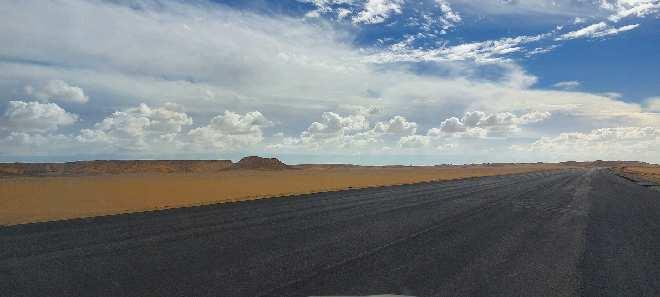
Just a few hours from Cairo lies a landscape that feels worlds away –where time slows down and history is etched into the rocks and sand
Our one-day tour to Fayoum takes you to a lesser-known part of Egypt that captivates with its quiet beauty and archaeological richness
You’ll travel along the shores of Lake Qarun, where desert and water meet in striking contrast

From the ancient ruins of Dimeh and the mysterious temple of Qasr El Sagha to the open-air museum at Qatrani, each stop tells a story of civilizations long gone, still whispering through stone and silence
This journey is ideal for travelers looking to experience Egypt off the beaten path – and for those who want more time in nature, the trip can be extended to include a night
Contact: : +20 101 506 9061
Email: service@dabuka de www.dabuka.com
of desert camping under the stars near the lake
rice: 102 $/pp uration: 1 Day oup size: min 4
re days, ask us for he best offer




Pick-up in Cairo in the early morning and drive towards the Fayoum Oasis Stop at Lake Qarun – enjoy the wide, shimmering views and the peaceful contrast of desert and water
Visit Dimeh – walk among the remains of this ancient Greco-Roman city and imagine life in the desert centuries ago.
Continue to Qasr El Sagha, a remote and mysterious temple that seems to rise out of the barren land


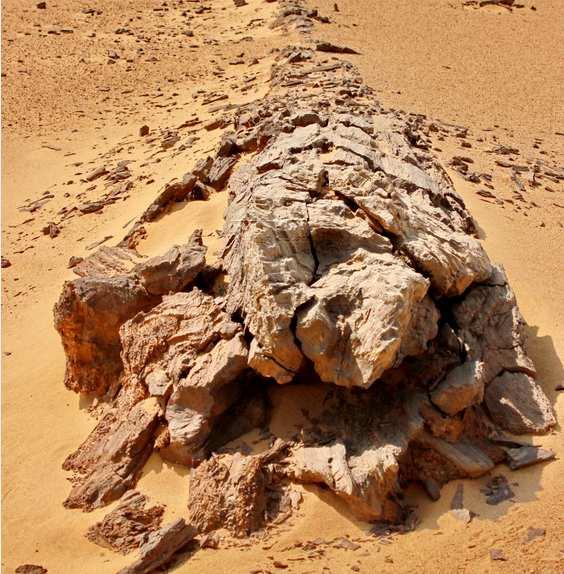
Explore the Qatrani Open Air Museum, where fossils, ancient stones, and structures blend into the desert landscape
Return to Cairo in the evening
Optional: Overnight desert camping available –including campfire, simple meals, and sunrise over the desert lake
Right at the beginning of my time in Egypt, I met Tetjana, and we quickly realized that we shared the same interests: dance, adventure, and bringing new ideas to life Even though we lost touch for a few years, we’re now all the more excited to have new plans together
Today, she’s ready to answer a few questions for us
Dorothee: How long have you been in Egypt – and what brought you here?
Tetjana: I’ve been in Egypt for 31 years I came on October 2, 1994 –and I remember this day like it was yesterday I had been invited by the Cairo Opera House to work as a ballet dancer
Dorothee: What were some of the most memorable moments in those early years?
Tetjana: My first visit to the Egyptian pyramids and the Egyptian Museum was an absolutely unique experience That was the moment I realized the greatness and deep cultural richness of this country It was simply amazing
Dorothee: You’re part of a real ballet family – is that a blessing or a challenge?
Tetjana: Of course, being in the same field means we understand each other very well Sometimes, though, this leads to disputes and different opinions But in the end, we always try to reach a common and positive decision
Dorothee: We remember how you started a dance group for teachers at our school. Later, we organized the very first Desert Ballet event
together with Dabuka That was quite an adventure How do you feel about such special projects?
Tetjana: I think I’m a bit of an adventurer by nature! New ideas and unusual projects really inspire me The concert in the desert was something truly unique But to be honest – that was your idea! I was just the performer I’m very happy that there are people like you in my life who try to make our lives brighter and more interesting
Dorothee: Thank you! Do you have any hobbies apart from dancing?
Tetjana: I love to travel Discovering new countries and cities is like a breath of fresh air to me – and a source of new creative energy
Dorothee: You now run your own ballet school in Cairo How did that come to life?
Tetjana: While I was working in a regular school, I missed having students with a more professional level – students who could really apply what they learned That was the main motivation to open my own ballet school

Dorothee: What is your biggest wish right now?
Tetjana: To see my son become a principal ballet dancer
Dorothee: Good luck and thank you for giving us a little insight into your life Looking forward to many more common projects!
Mark your calendar for February 2026
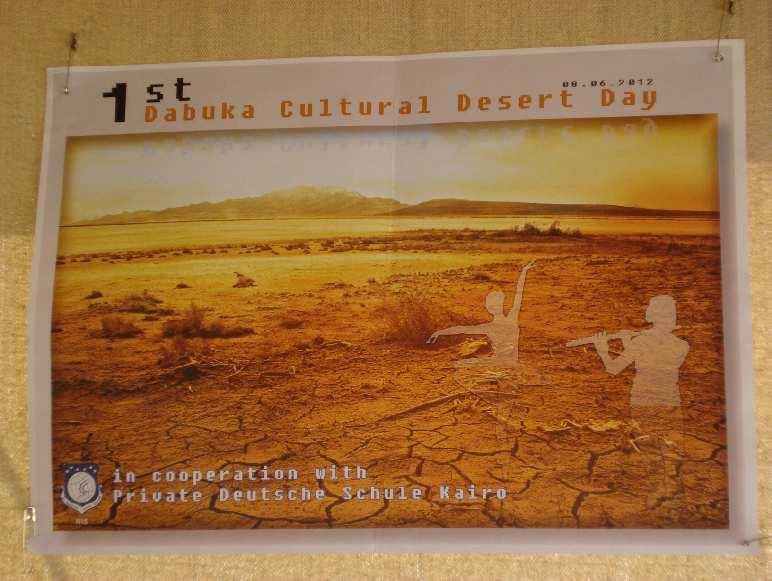



We asked our Dabuka office what spontaneously comes to their mind when they hear the word 'Dabuka'. Here are their answers:
I joined in 2008, returned in 2022. It’s more than work—it’s a supportive, creative team that feels like home. We think, create, plan trips, and always look for ways to stand out.



We love what we do, and there’s space to grow, dream, and belong.
My second family.



No day at the office with Amr goes by without his meaningful gesture that asks:
Would you like a coffee?
Yes – and it’s promptly delivered. Hot, black, and invigorating. It’s usually the little things that give everyday life a friendly face.


On the night of February 4, 1942, British military units surrounded Cairo’s Abdeen Palace with tanks and troops. Tension was high. British forces entered the palace and disarmed the royal guards — a clear show of power Shortly after, the British ambassador, Sir Miles Lampson, was escorted in to meet the young King Farouk I.
He delivered a stark ultimatum: the King must immediately dismiss Prime Minister Hussein Sirri Pasha and appoint the Wafd Party’s leader, Mustafa El-Nahhas. And, Farouk was to abdicate the throne
For a moment, the future of the Egyptian monarchy hung in the balance
Standing beside the young King Farouk - just 21 years old at the time - was his personal advisor, Ahmed Hassanein Pasha Calmly and quietly, Hassanein leaned in and whispered a strategy: accept

the demand to change the prime minister — but refuse to abdicate
accepted the partial concession
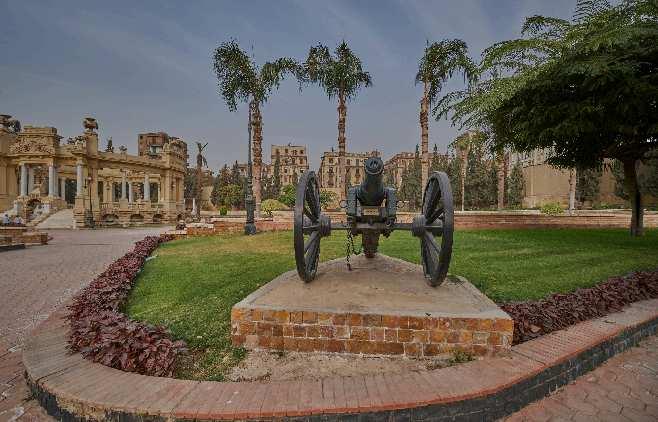
The young King followed the advice.
To the surprise of the ambassador, Farouk agreed to appoint ElNahhas but firmly rejected the idea of stepping down Caught off guard and under pressure to secure quick olitical stability, Lampson
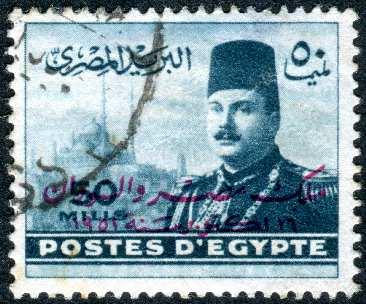
Farouk remained king — for now
Although he had yielded politically, quick thinking and the shrewd counsel of Ahmed Hassanein Pasha had allowed him to safeguard the throne It was a partial victory—perhaps only temporary—but one that delayed the fall of the monarchy and redirected Egypt’s course
For British Ambassador Sir Miles Lampson, who mockingly referred to Farouk as the “Boy King,” this was an unexpected setback In both London and Cairo, the question arose: how could one remove Hassanein Pasha, the seasoned political fox at the King's side?
Editorial Dabuka Travel Visions Issue 10
Editor: Dorothee Rieche
Art director: Tarek El Mahdy
Contributor: Shada Mamdouh Marketing&
Advertising:Mohamed Ibrahim